Female Bodybuilding Vegetarian Diet Plan
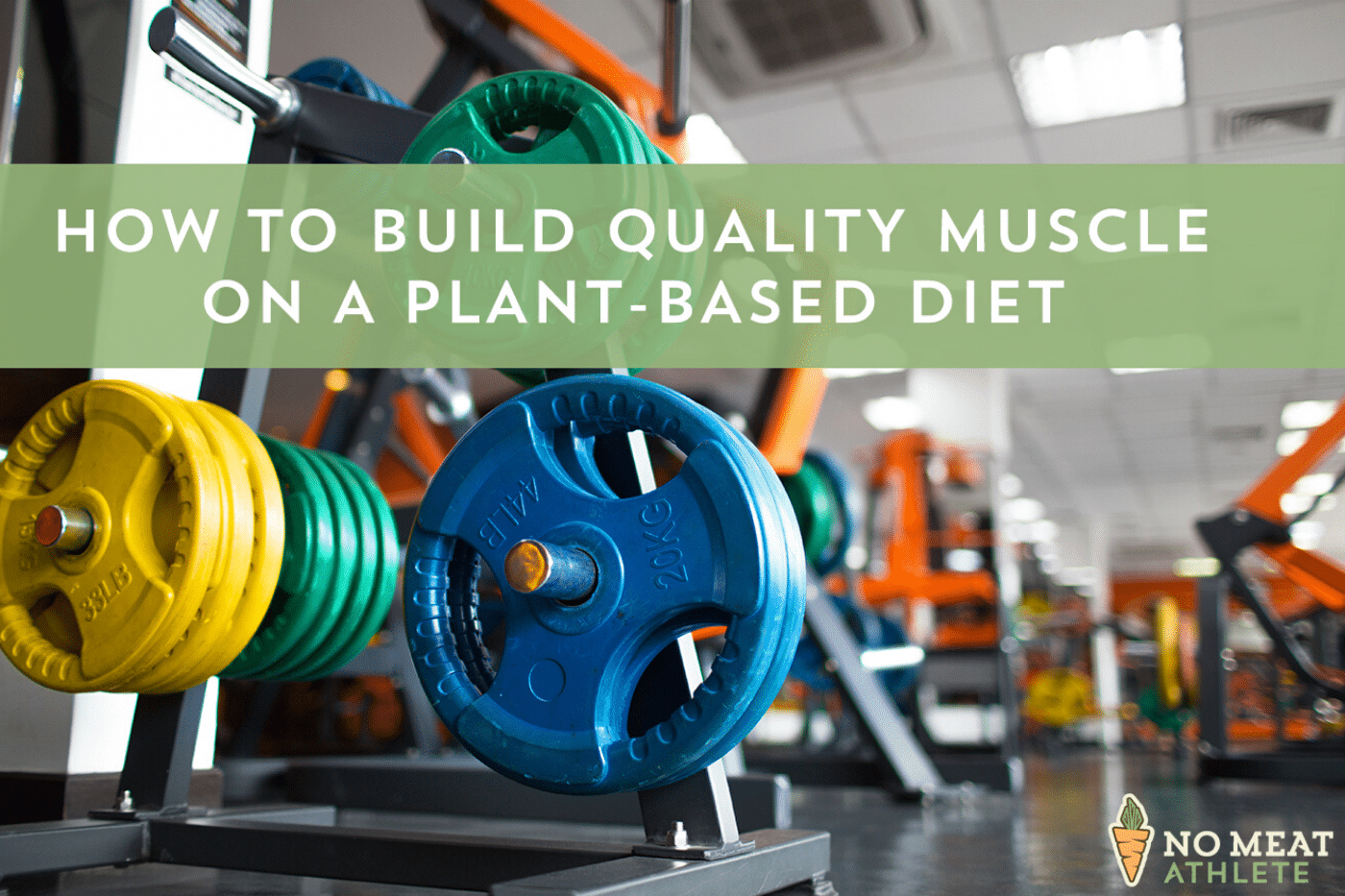
How to Build Muscle on a Plant-Based Diet: Staple Foods, Meal Plans, and Philosophy
By: Robert Cheeke
Let's face it, building muscle is hard, no matter what "diet" you follow. And supporting your athletic endeavors with a plant-based diet can be challenging too, especially if you've only recently gone vegan.
I've been there—desperately hoping to gain muscle on a plant-based diet. After decades of learning from personal failures and successes, I have officially cracked the code on how to truly build and sustain muscle. I'm sharing those keys to success with you today so that you too can achieve your bodybuilding and fitness goals.
When I first started my plant-based, muscle-building journey many years ago, there wasn't much publicly available on the subject. So little, in fact, that I had to rely almost entirely on trial and error. Thankfully, over time I started to figure it out, and I grew from weighing 120 pounds in 1995 when I went vegan, to a 210-pound champion bodybuilder at my peak, built entirely by plants (and hard work in the gym).
Even if you've struggled with building muscle in the past (while plant-based or not), I'm confident you can bulk up when you apply the strategies, habits, foods, and exercises necessary to achieve your goals.
And it all starts with nutrition.
Understanding Your Caloric Needs
Your quest to build muscle on a plant-based diet relies on understanding your true macronutrient and calorie needs. Not guessing, or estimating, or assuming characteristics about your current habits, but real, raw data based on who you are and what you do.
Believe it or not, it's much easier to figure out than you might think.
Start with finding your Basal Metabolic Rate (BMR) using the Harris-Benedict equation. BMR is the amount of calories you expend simply by existing, based on your gender, age, height, and weight.
Combine that number with your actual activity level—any additional movements beyond just existing, like walking the dog, running errands, hitting the gym, or walking up a flight of stairs. This gives you the approximate number of total calories you expend daily… your calorie needs.
If you expend 2,500 calories per day, you need to consume 2,500 calories per day just to maintain weight.
In order to gain muscle, you would need to consume more than 2,500 calories, ideally from mostly real plant foods. Combine that with resistance weight training, and you're on your way to muscle-town.
If you're interested in learning more, Matt Frazier and I do a full breakdown of macronutrients in our new book, The Plant-Based Athlete, and not that long ago I shared the technique above, along with my own caloric needs, in an interview for the No Meat Athlete Academy. Check out this clip:
As simple as this sounds, implementing this approach into daily life is the real struggle. But it doesn't have to be…
You just need to consume the healthy foods you enjoy most, with sufficient calorie quantities, and you've got it made.
To determine which foods will help most, it's important to consider not only calories but also nutrient density.
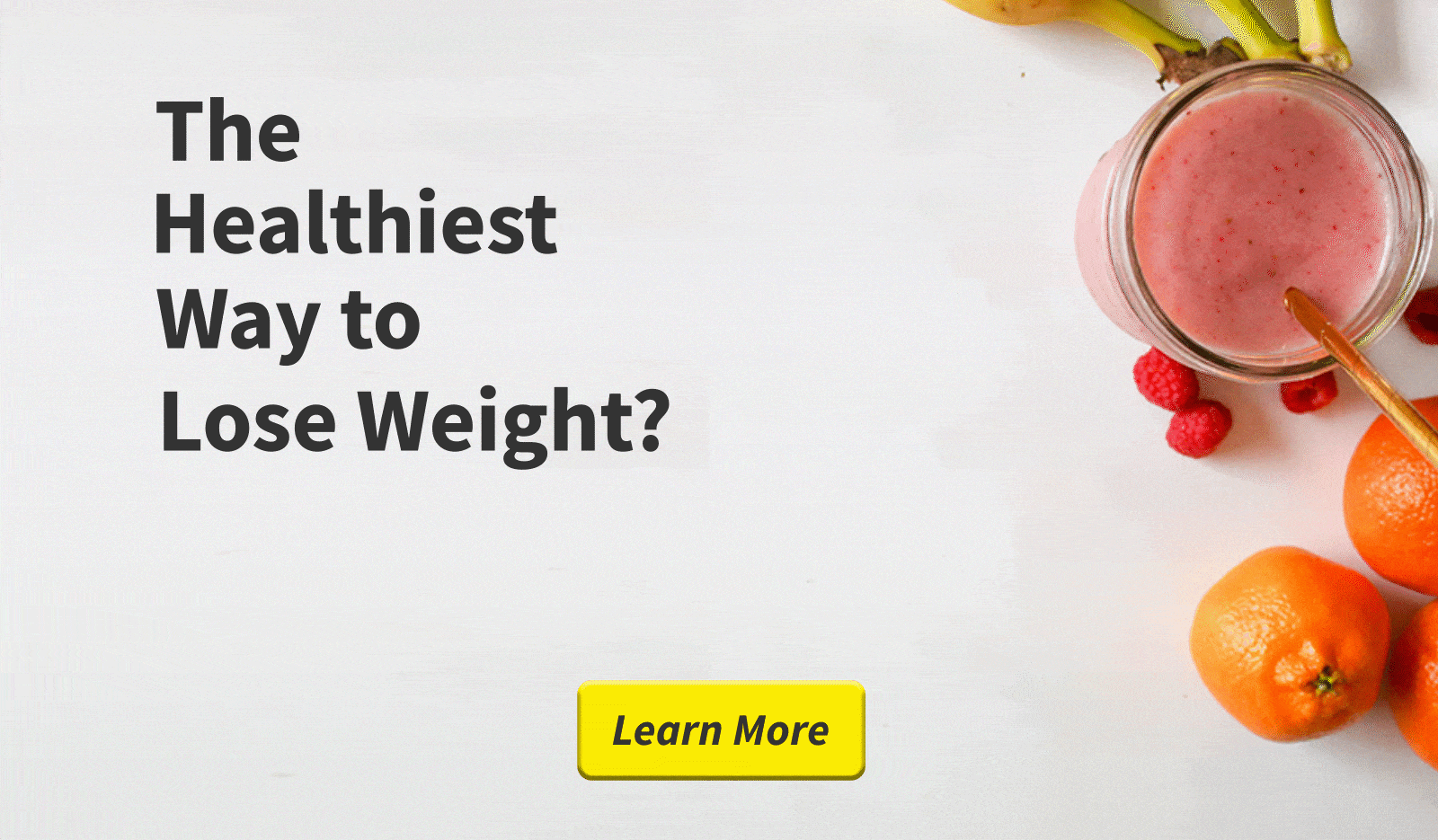
Calories vs. Nutrient Density
The nutrient density of a food is the amount of nutrients you can obtain from it, given the number of calories it contains. Nutrients give your body nourishment, allowing for growth, muscle recovery, energy, and quite frankly, the maintenance of life—think vitamins, minerals, amino acids, antioxidants, fiber, water, nitric oxide, and other phytonutrients. If you're looking for the biggest bang for your nutrient buck, the best place to look is whole foods.
Simply speaking, there is nothing in fresh, whole food that doesn't belong there (and yes, whole plant foods contain plenty of protein). There's a profound difference between eating 2,500 calories of whole plant foods like fruits, vegetables, legumes, grains, nuts, and seeds, and eating 2,500 calories of processed food-like substances such as chips, fries, pizza, candy, and ice cream.
You may be eating 2,500 calories either way, but the nutritional result is wildly different.
Therefore, low-calorie, nutrient dense foods provide a higher return on investment than foods that are high in calories but low in nutrition. Eating a high-calorie, nutrient-poor diet will make any fitness goals a struggle, whether burning fat and losing weight, building muscle, or improving endurance.
Here is a look at the rough calorie count vs. nutrient score for some common food types:
Dr. Joel Fuhrman's ANDI score method is an easy way to measure nutrient density. ANDI stands for Aggregate Nutrient Density Index, and basically reports "nutrients divided by calories," Fuhrman's formula for healthy eating. The higher the ANDI score, the higher nutrient density.
While calorie density is very important regarding weight gain and weight loss, nutrient density speaks to our health and the overall nutrition we are getting. Whole plant foods provide the perfect combination of relatively low calorie density with high nutrient quantity, and some foods such as the staples I list a little further down, are kings and queens of the plant-based jungle.
As we know, eating a plant-based diet doesn't mean limiting yourself to fewer food options than on an omnivorous diet. There are lots of options! While this is good news, it can also be overwhelming. But—like many things, it doesn't have to be too complicated at all.
Five Staple Foods for Bulking Up
This is the section where calorie needs and nutrient density come together in beautiful union.
By weighing a food's calories against its nutrient density profile, you'll set yourself up for success in building muscle. Of course you want to consume as many nutrients as possible, but hitting your calorie goals on kale alone just won't cut it.
So where do you start? Here are five staple foods to include in your bulking up program, based on their nutrient-to-calorie ratios and caloric density:
- Oats
- Potatoes
- Beans and lentils
- Brown rice
- Bananas and other fruits
With variations of just these five staple foods alone, you can create lots of variety and overall nutrition to help you in your bulking efforts.
Now, let's put that in action…
Create Muscle-Building Meal Plans
In my new book, Plant-Based Muscle, my co-author Vanessa Espinoza and I provide a great collection of meal plans. I'd like to share two with you now to showcase the variety of foods that can help you hit your caloric goals.
Sample Meal Plan 1 with 2,500 Calories
Breakfast
Oatmeal
- 1 cup cooked spelt
- 2 tablespoons sunflower butter
- 1 tablespoon raisins
- 1 teaspoon cinnamon
- 1 sliced banana
- Mix together in a bowl
634 calories, 95 g carbohydrates, 17.6 g protein, 20.4 g fat, 14 g fiber
Snack
Edamame
- 1 cup
189 calories, 15 g carbohydrates, 17 g protein, 8 g fat, 8 g fiber
Snack
Fruit
- 2 cups blueberries, strawberries, or raspberries, or any combination of the three
92 calories, 20 g carbohydrates, 3 g protein, 0 g fat, 3 g fiber
Lunch
Spinach and Kale Salad
- 1 cup raw spinach
- 1 cup raw kale
- ½ cup cooked brown lentils
- Any type of veggies you like
- 1 tablespoon sunflower seeds
- 1 tablespoon pumpkin seeds (pepitas)
- ½ cooked sweet potato
- 2 tablespoons Follow Your Heart brand vegan honey mustard dressing
495 calories, 71 g carbohydrates, 16 g protein, 16.3 g fat, 12.3 g fiber
Snack
Nuts and Seeds
- Handful of raw nuts and seeds (no oil or salt): peanuts, walnuts, pecans, cashews, Brazil nuts, macadamia nuts, pine nuts, sunflower, and pumpkin seeds (pepitas)
441 calories, 14 g carbohydrates, 15.2 g protein, 36 g fat, 9 g fiber
Dinner
Rice and Bean Bowl
- ½ cup cooked black rice
- ½ cup chickpeas
- 1 tablespoon pine nuts
- 1 tablespoon hemp seeds
- 1 cup cooked broccoli or asparagus
- 2 tablespoons nutritional yeast
- Mix together on a plate
343 calories, 64 g carbohydrates, 15 g protein , 3 g fat, 10 g fiber
Snack
2 Banana Protein Muffins
- 4 bananas
- 1 cup dry oats
- 2 scoops protein powder
- ½ cup coconut flakes
- ½ cup walnuts
- ¼ cup vegan chocolate chips
- Preheat the over to 350 degrees Fahrenheit. In a large bowl, mash the bananas. Mix in the remaining ingredients until thoroughly combined. Form into 12 balls and place on a cookie sheet or in a muffin tin. Bake for 20 minutes.
For 2 banana muffins: 259 calories, 34.8 g carbohydrates, 10 g protein, 14.8 g fat, 5.6 g fiber
Totals
2,453 calories, 313.8 g carbohydrates, 93.8 g protein, 98.5 g fat, 61.9 g fiber
Sample Meal Plan 2 with 2,900 Calories
Breakfast
Quinoa Breakfast Bowl
- 1 cup cooked quinoa
- 1 tablespoon peanut or almond butter
- 2 tablespoons chia
- 1 banana
- 1 teaspoon cinnamon
- 1 tablespoon hemp seeds
699 calories, 96 g carbohydrates, 23.8 g protein, 24.4 g fat, 20 g fiber
Snack
Fruit and Nut Butter
- Apple and 1 tablespoon peanut butter
275 calories, 31 g carbohydrates, 7.5 g protein, 15.3 g fat, 6.4 g fiber
Or, Protein Shake
- Vegan protein shake with 1 cup unsweetened almond milk, water, and ice
211 calories, 13 g carbohydrates, 24 g protein, 7g fat, 5 g fiber
Lunch
Sweet Potato Plate
- 6 ounces baked tofu using different types of seasoning
- ½ cup sweet potatoes
- 2 cups roasted or steamed veggies
698 calories, 62 g carbohydrates, 45 g protein, 30 g fat, 5 g fiber
Snack
Veggies and Hummus
- Raw veggies of any kind (I like to keep chopped up celery, carrots, cucumbers, and radishes in the fridge)
- 2 tablespoons hummus
78 calories, 9 g carbohydrates, 2 g protein, 3.8 g fat, 2 g fiber
Snack
Nuts and Seeds
- Handful raw nuts and seeds (no oil or salt): peanuts, walnuts, pecans, cashews, Brazil nuts, macadamia nuts, pine nuts, sunflower, and pumpkin seeds (pepitas)
441 calories, 14 g carbohydrates, 15.2 g protein, 36 g fat, 9 g fiber
Dinner
Black Bean Bowl
- 1 cup black beans
- 1 cup cooked brown basmati or black rice, farro, or quinoa
- ½ avocado, diced
- ½ cup salsa of your choice
- Sprinkle nutritional yeast
- Mix together in a bowl
658 calories, 96.6 g carbohydrates, 27 g protein, 18.3 g fat, 26.2 g fiber
Snack
Fruit
- 1 cup strawberries and 1 cup blueberries
122 calories, 28 g carbohydrates, 2 g protein, 0 g fat, 6 g fiber
Or, Protein Shake
- Vegan protein shake with 1 cup unsweetened almond milk, water, and ice
211 calories, 13 g carbohydrates, 24 g protein, 7 g fat, 5 g fiber
Totals
2,971 calories, 336.6 g carbohydrates, 122.5 g protein, 127.8 g fat, 74.6 g fiber
With optional protein shakes:
2,996 calories, 303.6 g carbohydrates, 161 g protein, 126.5 g fat, 72.2 g fiber
Combine an Effective Exercise Program for Desired Results
I've talked a lot about nutrition in this article, but before you think gaining muscle is all about eating, an effective exercise program is unsurprisingly a key component. I won't go into too much detail here (there are plenty of lifting routines out there), but I do want to share the fundamental principles everyone should follow:
- Although you may start out with at-home workouts, the foundation of your workout program should eventually consist of barbell and dumbbell free weight exercises.
- Perform exercises you enjoy. Ultimately, if it isn't fun, you will find a way to avoid it.
- Create a workout program that targets all major muscle groups, including, legs, chest, back, shoulders, arms, and abs, to ensure you stimulate muscle growth throughout your whole body, not just your chest and biceps. You can train one muscle group per day, for five or six major workouts per week, or you can combine multiple muscle groups into a single workout.
- Consistency is key to success. You will need to put in the requisite time in order to attain desired results.
- Set attainable goals.
- Document your workouts as a way to hold yourself accountable.
The key is to train hard with consistency and with a level of intensity geared toward igniting and eliciting change and forward progress.
(You can learn more in an interview aboutPlant-Based Muscle that I did for NMA Radio.)
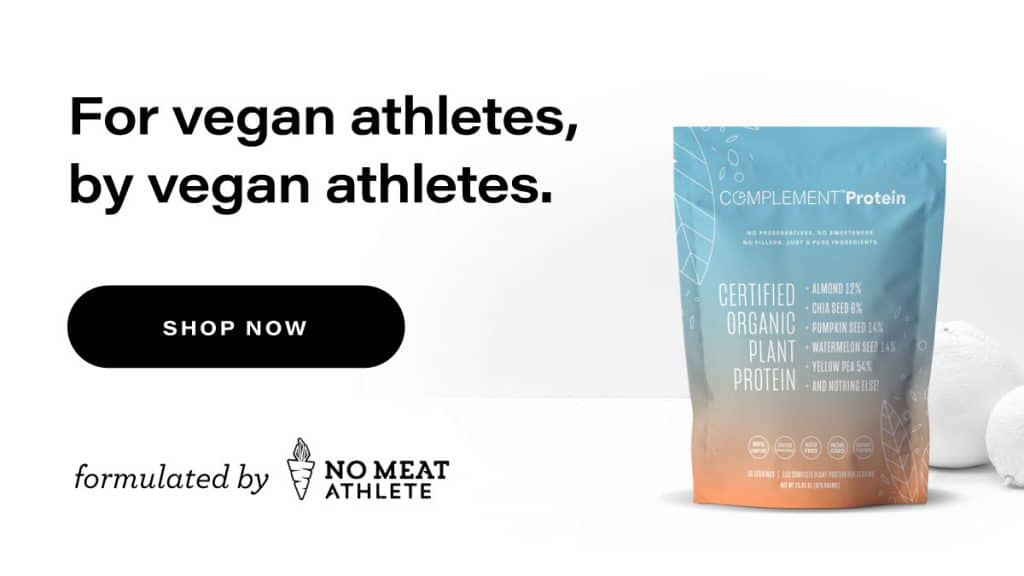
Set Goals and Objectives and Track Your Progress
A great exercise and nutrition plan creates an excellent foundation for your bodybuilding goals. The next step is to create actionable goals with attainable objectives.
Here's an example of what that looks like:
Goal: Add 10 pounds of total mass over the next 6 months. (Pro-tip: Share your goal with some friends and on social media, and hold yourself accountable by providing regular updates, good or bad.)
Timeline: Add 2 pounds of mass per month (muscle, fat, and water weight), and evaluate progress monthly.
Action Plan: 5 days per week of resistance weight training, and develop a nutrition plan that supports your goal by meeting your calorie and other nutritional needs.
It's also important to track your progress daily. Not only your gains, but also track the food you eat.
This may seem tedious at first, but I've found that over time, it becomes second nature, and with little effort you'll be able to construct a nutrition program that will set you on the path to success.
Meal tracking can be the secret sauce to your muscle-building plan. But of course, sometimes, life gets in the way.
Recently, I spent many months editing, revising, and re-writing a book I spent nearly two years writing. I was working 12- and 15-hour days leading up to the day I submitted the manuscript for printing. Subsequently, I took some days off from the gym, and my nutrition plan took a hit too, and things like frozen vegan burritos made their way into my diet…
I'm not afraid to admit it. I wasn't tracking or focused on my goals, and inevitably, things went awry.
But, after submitting my manuscript, I got back to documenting meals and workouts, and in just one month, the results were obvious:
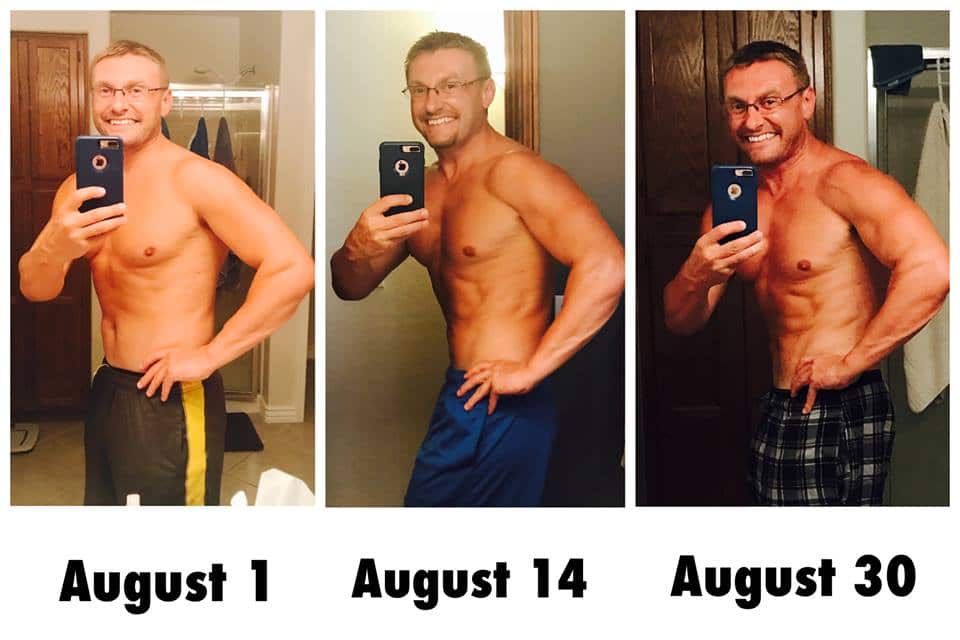
Had I put more effort into tracking what I ate throughout those busy weeks and months, I wouldn't have slipped as far as I did.
Tracking holds you accountable, and gives you a clear picture of what you're eating, what you're not eating, and where you're falling short.
I use Cronometer, MyFitnessPal, or the Shred It! 13-Week Training Journal to document my daily meals and workouts to have an accurate account of my efforts. This way I can look back at my progress to see where I've hit my goals or where I need to make some adjustments.
You Have the Tools, Now Make it Happen
My experience in building muscle on a plant-based diet took decades of trial and error—but your experience can be so much better! The systems and approaches I outlined above have proven effective time and time again, not only for me but also for the thousands of plant-based athletes who have followed these principles.
Your exact approach will be filled with variation and interpretation, but the core concepts remain true and lead to success: set meaningful goals, eat healthy with whole plant foods, perform exercises you truly enjoy, and be consistent.
Now make it happen. I believe in you.
About the Author: Robert Cheeke is the co-author (with Matt Frazier) of The Plant-Based Athlete, out June 15th. He's also a two-time champion bodybuilder and the founder/president of Vegan Bodybuilding & Fitness.
Save
Save

Great article. Appreciate all the detail, clear examples and photos of your results.
Love all, Robert Cheeke'smstuff. Guess I have a new book to buy. Thanks Robert for being a voice and an inspiration. Wow, amazing transformationin just 30 days!
This is really informative. Thank you! I'm also going to check out your new book.
I've got a question slightly off the subject. In trying to go completely vegan (I've been almost that for most of my adult life) I have developed dental caries for the first time in my life (and I'm 70 years old). Research has indicated that the higher phytic acid content of grains and legumes often does contribute to cavities with vegans. Your recommended recipes are high in these ingredients. Any thoughts?
-
Sprout and soak you nuts seeds and grains
I'm trying to lose fat while building muscle. Are these incompatible goals since you need to increase calories to gain muscle but decrease calories to lose fat? Do you have to do one before the other? If so, how do you safely raise your calorie intake to allow muscle gain without regaining the fat? Thanks in advance for your help
-
If I may offer my 2-cents, I am of the understanding that yes, when consuming more calories to increase muscle mass, fat will also come with it. One solution is to "zigzag" your training and eating plans. I'm no expert but Google it; Thomas Tadlock has some great info about this. Not sure NMA has info on this but search the page just in case. Or read about Vanessa's training style in their new book, I recall she incorporates cardio regularly with her lifting regimen to keep body fat in check. Lastly, you can focus on building mass, all mass, then finish with a shredding routine to cut fat. That's what my trainer wants me to do… We're focused on gaining mass and if my body fat goes out of our goals, we'll incorporate some HIIT cardio training to cut. Again, no expert but you can look at these styles of training online.
I have the same question as Jennifer. I've also heard to lose fat you need to cut it down but I've also read you need fat to fight fat? Everything is confusing could you please explain the correct way this is supposed to be done. Thank you so much laura
Great article, will be bookmarked as of now! ?
This is a good article covering strategies for bulking up but it does not provide any guidelines for cutting. I was wondering what Robert's recommendations are, such as how to do it effectively, when to bulk and when to cut etc..
Very informative, but these articles are always catered to men who workout. Would be nice if you could also provide a realistic meal plan for women who strength train.
-
Some of those meal plans are Vanessa's from their book. I use a lot of those as the basis for my meals and training goals. You can reduce the total amount but keep the ingredients (ratios) if that makes sense? Like discussed in the article, figure out your calorie targets and then modify these recipes, they really are great! Their e-book is helpful too. I bought it to get the perspective of a female who lifts.
What about fasting. Ive always read and heard you need to give your GI a rest. In your meal plans you are eating 6 times a day
Hello,
I'm really struggling. I switched over to a vegan diet. I did a show back in October and I was eating meat. I can find no one to help me. I just can't seem to get the right amount of macros to help me stay lean. I feel bloated and gross. I don't want to go back to meat. Please help. I know how to weigh my foods while eating meat but for some reason I'm struggling with eating the correct vegan macros. Please help. My maintenance daily intake in cal is 2165. to bulk its 2382 and to cut is 1732. I dont want to. bulk anymore than I am and I don't know what to eat as far as a meal plan. or how to figure it out. What should I do?
-
I bumped into this site and Im happy about it. Considering all natural bodybuilding. Wow, everything I need is right here! Thank you!
Thanks, I'm starting my bodybuilding again. I want to do my first show and look amazing. Great transformation on 30 days, wow! That's motivation right there;)
Great stuff! I went over to a mostly vegan diet after moving in together with my girlfriend. Been struggling with the weightlifting ever since, hoping my results will go back up with these tips.
As a vegan active person I eat regularly tofu, quinoa, rice, tofu, chia seeds, and hemp seeds for protein. Maca powder as stimulant. BCAAs as a protein supplement
actually I am more confused you share the totals after one days meal plan which consisted of 122.5 g protein,
My understanding from most bodybuilders is to eat 1.5 to 2 grams of protien per pound of body weight . therefore would not the total grams of protien far exceed 122.5 grams for one days total ?
Hi there. I made the switch to vegan about one year ago. I power lift and cross fit so I am interested in gaining muscle. Problem I have with vegan diet is it is impossible to maintain the correct macro ratio. Trying to get the 1 gram of protein per kilo of body weight recommended for muscle gain mean my carbs go through the roof! Simply put, there is no natural way to eat whole food, plant based vegan and maintain the desired macro ratio without resorting to protein supplements. I fully plan to stick with vegan but this conundrum has me wondering how truly natural the vegan diet is for humans. Appreciate any insight.
Female Bodybuilding Vegetarian Diet Plan
Source: https://www.nomeatathlete.com/build-muscle-plant-based/
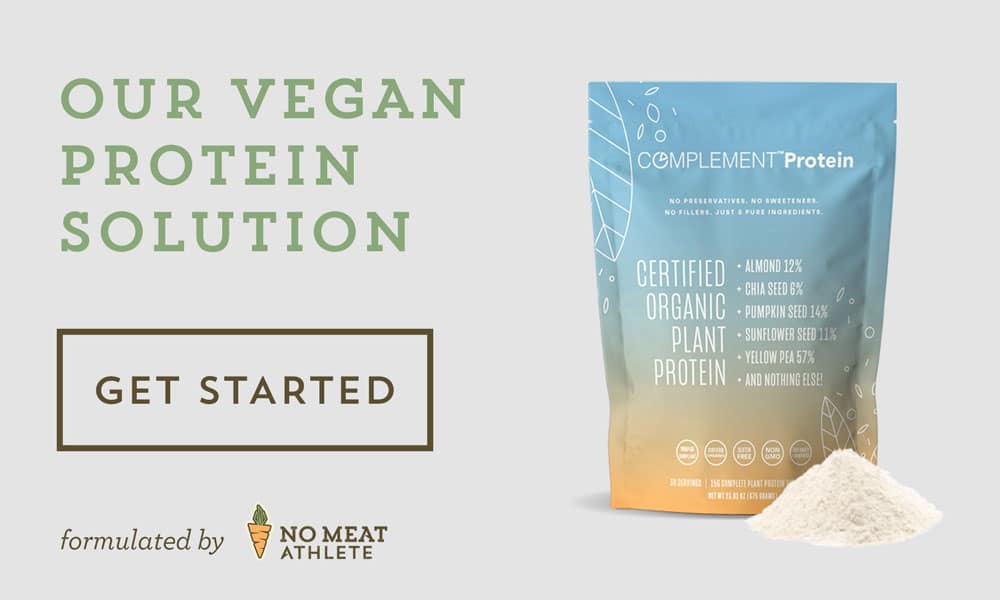
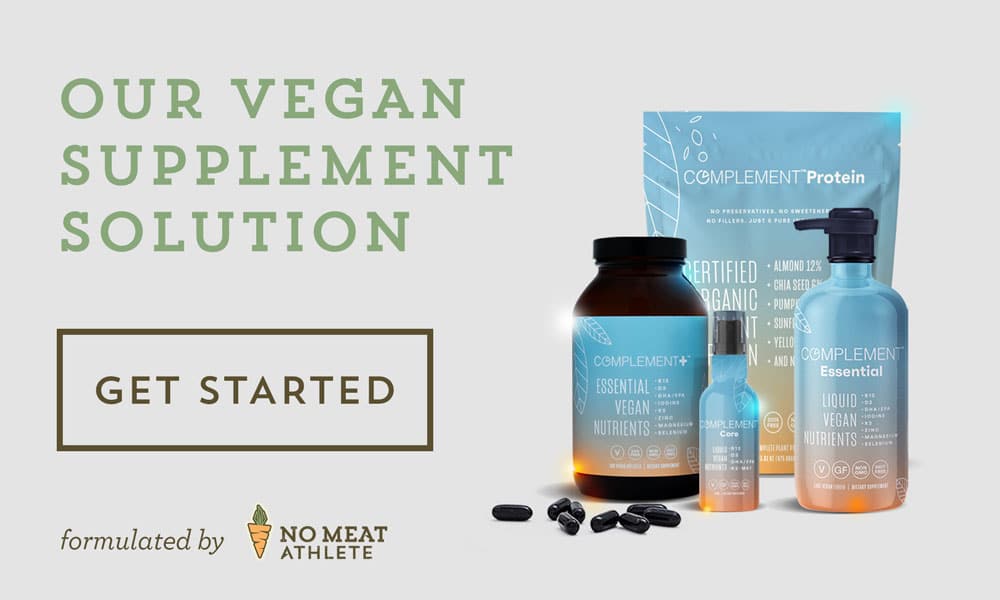
0 Response to "Female Bodybuilding Vegetarian Diet Plan"
Post a Comment